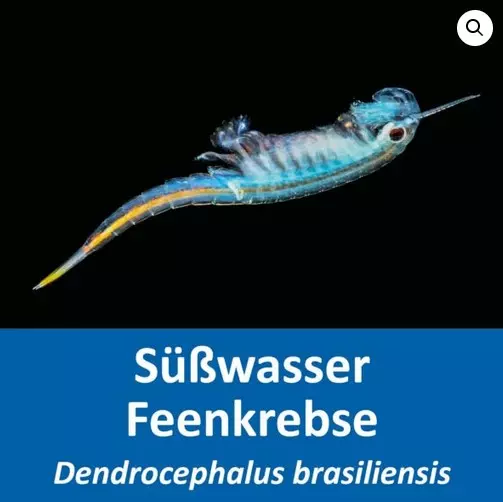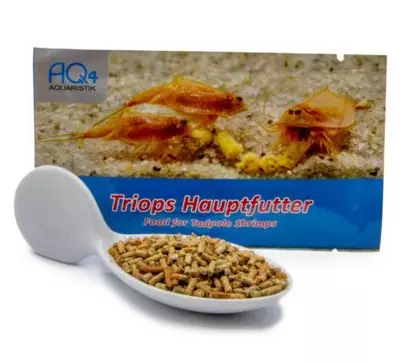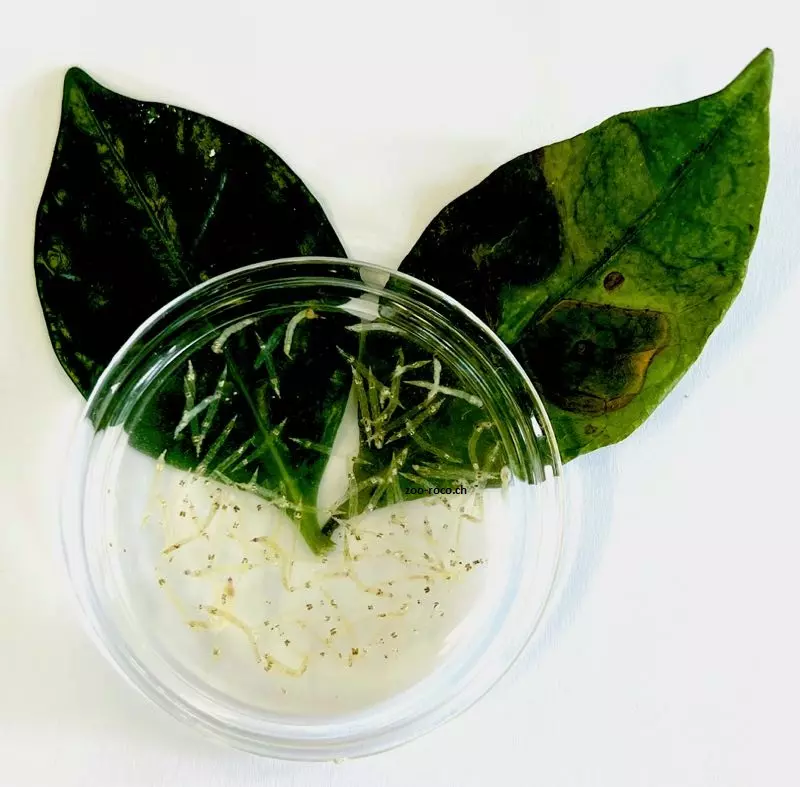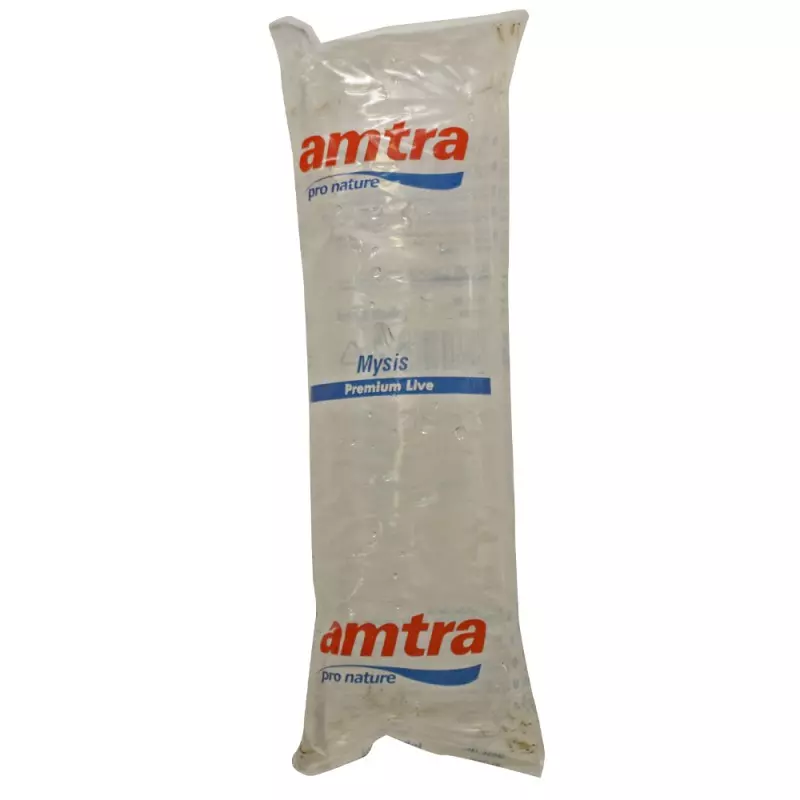

CHF 9.90
Stock: 6
Available, delivery time: 1-3 days

The Mini crabs are going! Fairy shrimps (Branchinella thailandensis)
The freshwater fairy shrimp Branchinella thailandensis from Thailandis is very well suited for aquarium at temperatures around 23 - 25 °C. Keeping is optimal in a small aquarium with soft water. The small larvae slit out from eggs (cysts) within one or three days and life with good care about 6 to 12 weeks.
Facts: Fairy shrimp among to the anostraca, have a fascinating floating manner and are even a nutritious feed for fish.
- Max. size: 35 mm
- Life expectancy: max. 3 months
- Cysts per female: max. 5000
- Temperature: 20 - 28 °C (optimal 23 - 25 °C)
- pH value: 6,0 - 9,0 (optimal 6,5 - 7,5)
- Expected fairy shrimp amount: at least 100 or 1.000 per bag
- Aquarium starting with 2 liters
Tip: An approach with fairy shrimp cysts should be used multiple times by respective drying because at the first time not all nauplii slip out.
5 of 5 reviews
4.6 out of 5 stars
Login
21 June 2021 13:14
Sehr gut
Sehr gut
18 December 2020 18:20
Auch nach längerer Zeit sind noch keine
Auch nach längerer Zeit sind noch keine Nauplien geschlüpft. Die Packung sonst macht einen sehr guten Eindruck und auch die Anleitung hilft, den Einstieg zu finden.
14 October 2020 06:25
Top!
Die Feenkrebse schlüpften nach 18 Stunden, sehr viele und wuchsen schnell, Top Qualität. Auch das Futter, sehr gut, verschmutzt das Wasser kaum, einfach sparsam füttern. Immer wieder gerne.
11 January 2019 14:20
aucune éclosion ! je vais réessayer
aucune éclosion ! je vais réessayer
10 September 2017 20:43
Schlüpfen schnell und in...
Schlüpfen schnell und in grosser Zahl
Customers also bought
Similar products
Customers also viewed



















